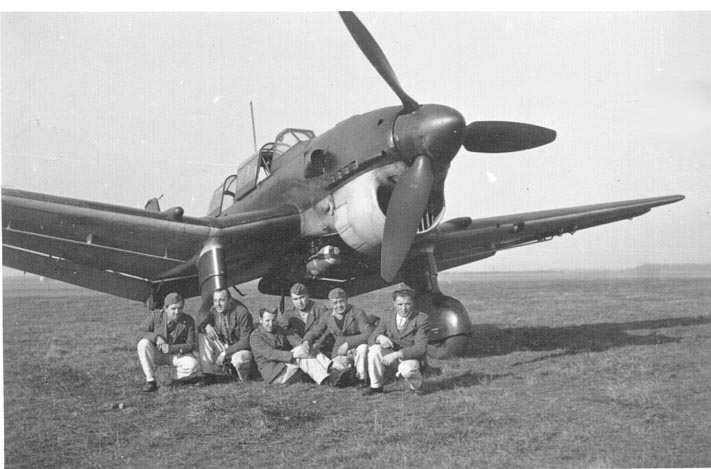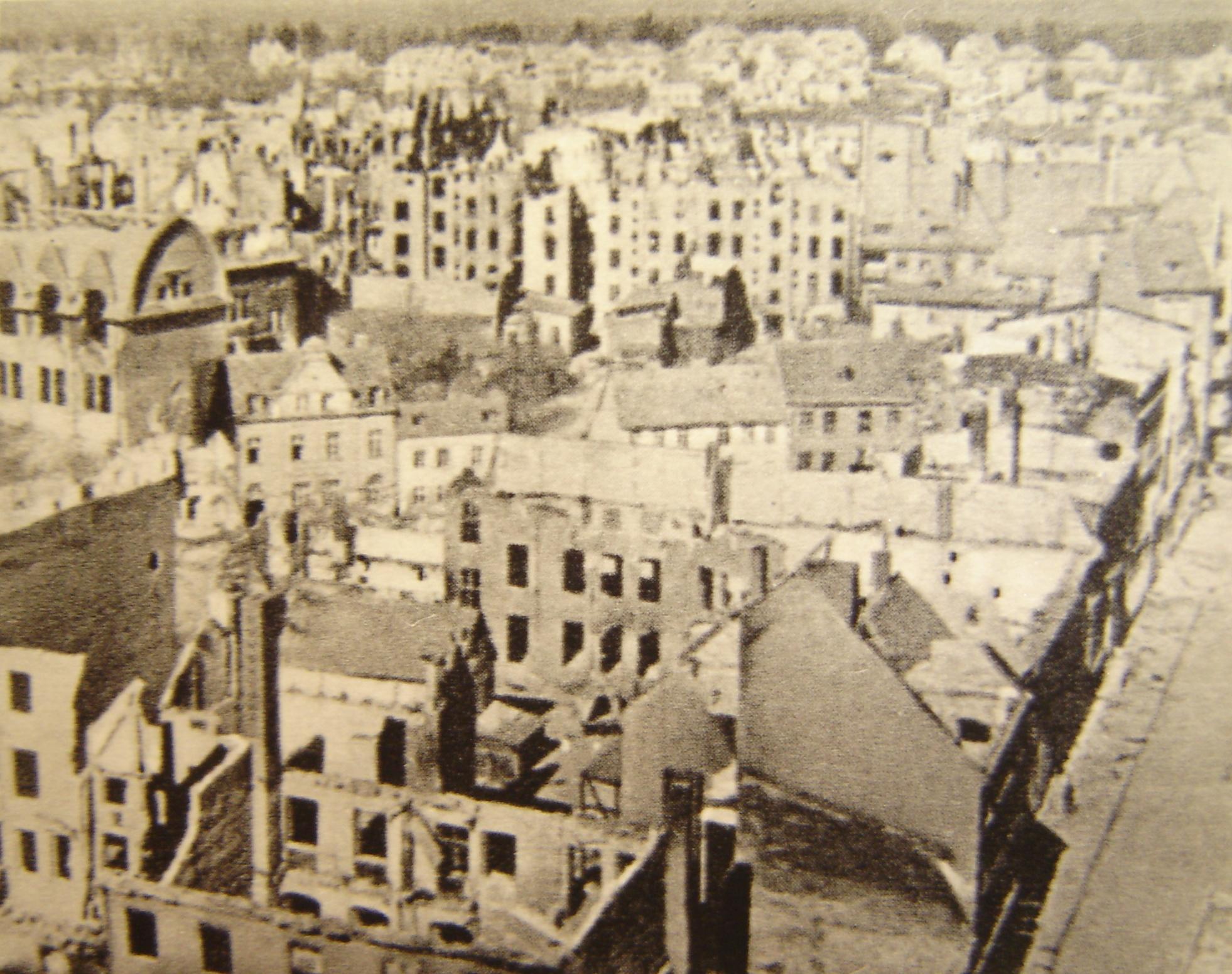
Junkers Ju 87: tank destroyer and night attack aircraft part 4
Ju 87 G-1 ready for takeoff, at the controls of Hptm. Hans-Ulrich Rudel; July 5, 1943
The first Junkers Ju 87 G-1 aircraft equipped with 18 mm Flak 37 guns entered service with III./St. G 2 in May 1943. At that time, the squadron was stationed at the Kerch 4 airfield in the Crimea. The main task of the "Pieces" was the fight against amphibious assaults landed in the rear of the German troops in the Kuban. The Russians used fleets of small craft for this purpose.
Hauptmann Hans-Ulrich Rudel tested one of the Ju 87 G-1 aircraft against them:
Every day, from dawn to dusk, we walk on the water and reeds in search of boats. Ivan rides on small primitive canoes, motor boats are rarely seen. Small boats can hold five to seven people, larger boats can hold up to twenty soldiers. We do not use our special anti-tank ammunition, it does not need a large puncture force, but a large number of fragments after hitting the wooden sheathing, so you can destroy the boat as quickly as possible. The most practical is the usual anti-aircraft ammunition with the appropriate fuse. Everything that floats on the water is already lost. The losses of Ivan's boats must have been serious: in a few days I myself destroyed more than 70 of them.
Successful operations against the Soviet landing craft were filmed by an automatic camera placed under the wing of the Stukov and were shown in all German cinemas as an excerpt from the chronicle of the German Weekly Review 2.
On the first day of Operation Citadel, July 5, 1943, the Ju 87 G-1 made its debut in combat against Soviet armored vehicles. These aircraft belonged to the 10th (Pz)/St.G 2 under the command of Hptm. Rudel:
The sight of a huge mass of tanks reminds me of my car with guns from the experimental unit, which I brought from the Crimea. In view of such a huge number of enemy tanks, it could be tested. Although the anti-aircraft artillery around the Soviet armored units is very strong, I repeat to myself that our troops are at a distance of 1200 to 1800 meters from the enemy, so if I do not fall like a stone immediately after the anti-aircraft missile hits, it will always be possible to bring the wrecked vehicle close to our tanks . So the first bomber squadron follows my only cannon plane. We'll try soon!
During the first action, powerful hits from my cannons will blow up four tanks, and by the evening I will have destroyed twelve of them. We are all covered by some kind of hunting passion associated with the fact that with each destroyed tank we save a lot of German blood.
In the following days, the squadron achieves numerous successes, slowly developing tactics for attacking tanks. Here's how one of its creators, Hptm. Rudel:
We dive on steel colossi, sometimes from behind, sometimes from the side. The descent angle is not too sharp to be close to the ground and not stall the glider on exit. If this happened, avoiding a collision with the ground with all the ensuing dangerous consequences would be almost impossible. We must always try to hit the tank at its weakest points. The front of any tank is always the strongest point, so every tank tries to collide with the enemy in front. The sides are weaker. But the most favorable place for an attack is the rear. The engine is located there, and the need to ensure adequate cooling of this power source allows the use of only thin armor plates. To further enhance the cooling effect, this plate has large holes. Shooting a tank there pays off, because there is always fuel in the engine. A tank with a running engine is easy to spot from the air by the blue exhaust smoke. Fuel and ammunition are stored on the sides of the tank. However, the armor there is stronger than at the back.
The combat use of the Ju 87 G-1 in July and August 1943 showed that, despite their relatively low speed, these vehicles are the best suited for destroying tanks. As a result, four tank destroyer squadrons were formed: 10.(Pz)/St.G(SG)1, 10.(Pz)/St.G(SG)2, 10.(Pz)/St.G(SG) ) 3 and 10. (Pz) /St.G (SG) 77.
On June 17, 1943, the 10th (Pz) / St.G1 was formed, which, after being renamed on October 18, 1943 to the 10th (Pz) / SG 1, operated in February and March 1944 from the Orsha airfield. She was directly subordinate to the 1st Aviation Division. In May 1944, the squadron was transferred to Biala Podlaska, where Stab and I./SG 1 were also stationed. In the summer, the squadron operated from the territory of Lithuania, from the airfields in Kaunas and Dubno, and in the autumn of 1944 from the vicinity of Tylzha. Since November, its base airport has been Shippenbeil, located southeast of Königsberg. The squadron was disbanded on January 7, 1945 and included in the I. (Pz) / SG 9 squadron.
The 10.(Pz)/SG 2 mentioned above fought against Soviet tanks on the Dnieper in the autumn of 1943. At the beginning of 1944, he supported units of the 5th Panzer Division of the Waffen SS "Viking" when breaking through the encirclement near Cherkassy. The squadron then operated from the airfields of Pervomaisk, Uman and Raukhovka. On March 29, Hptm was awarded the Golden German Cross for outstanding service in the fight against Soviet tanks. Hans-Herbert Tinel. In April 1944, the unit operated from the Iasi airfield. The difficult situation on the middle section of the eastern front led to the transfer of part in July to the territory of Poland (airports of Yaroslavice, Zamosc and Mielec), and then to East Prussia (Insterburg). In August 1944 the current squadron leader Hptm. Helmut Schubel. Lieutenant Anton Korol, who recorded the destruction of 87 Soviet tanks in a few months.
At this time, a legend is being created about the greatest ace of the Stukavaffe, who was Oberst Hans-Ulrich Rudel. Back in the summer of 1943, during the fighting on the middle section of the Eastern Front, on July 24, Rudel made 1200 sorties, two weeks later, on August 12, 1300 sorties. On September 18, he was appointed commander of III./St.G 2 "Immelmann". On October 9, he makes 1500 sorties, then completed the destruction of 60 Soviet tanks, on October 30, Rudel reports on the destruction of 100 enemy tanks, on November 25, 1943, in the rank of 42nd soldier of the German armed forces, he was awarded the Oak Leaf Swords of the Knight's Cross.
In January 1944, the squadron under his command achieved numerous successes during the Battle of Kirovgrad. On January 7-10, Rudel destroyed 17 enemy tanks and 7 armored guns. On January 11, he retains 150 Soviet tanks on his account, and five days later he makes 1700 sorties. Promoted to major on March 1 (retrospectively from October 1, 1942). In March 1944, III./SG 2, which commanded them, stationed at the Raukhovka airfield, located 200 km north of Odessa, is trying with all its might to support the desperate defense of the German troops in the Nikolaev area.
On March 25, he makes 1800 sorties, and on March 26, 1944, he destroyed 17 enemy tanks. The next day, his feat was recorded in the summary of the Wehrmacht High Command: Major Rudel, the squadron commander of one of the assault regiments, destroyed 17 enemy tanks in the south of the Eastern Front in one day. Rudl also mentioned on March 5: Strong regiments of German assault aviation entered the battle between the Dniester and Prut. They destroyed numerous enemy tanks and a large number of mechanized and horse-drawn vehicles. This time, Major Rudel again neutralized nine enemy tanks. Thus, having flown more than 28 sorties, he had already destroyed 1800 enemy tanks.202 The next day, as the 6th soldier of the German armed forces, Rudel was awarded the Knight's Cross with Oak Leaves, Swords and Diamonds, which Adolf Hitler personally presented to him in Berghof near Berchtesgaden. On this occasion, from the hands of Hermann Goering, he received a gold badge of a pilot with diamonds and, as the only pilot of the Luftwaffe during the Second World War, a gold badge of front-line aviation with diamonds.
